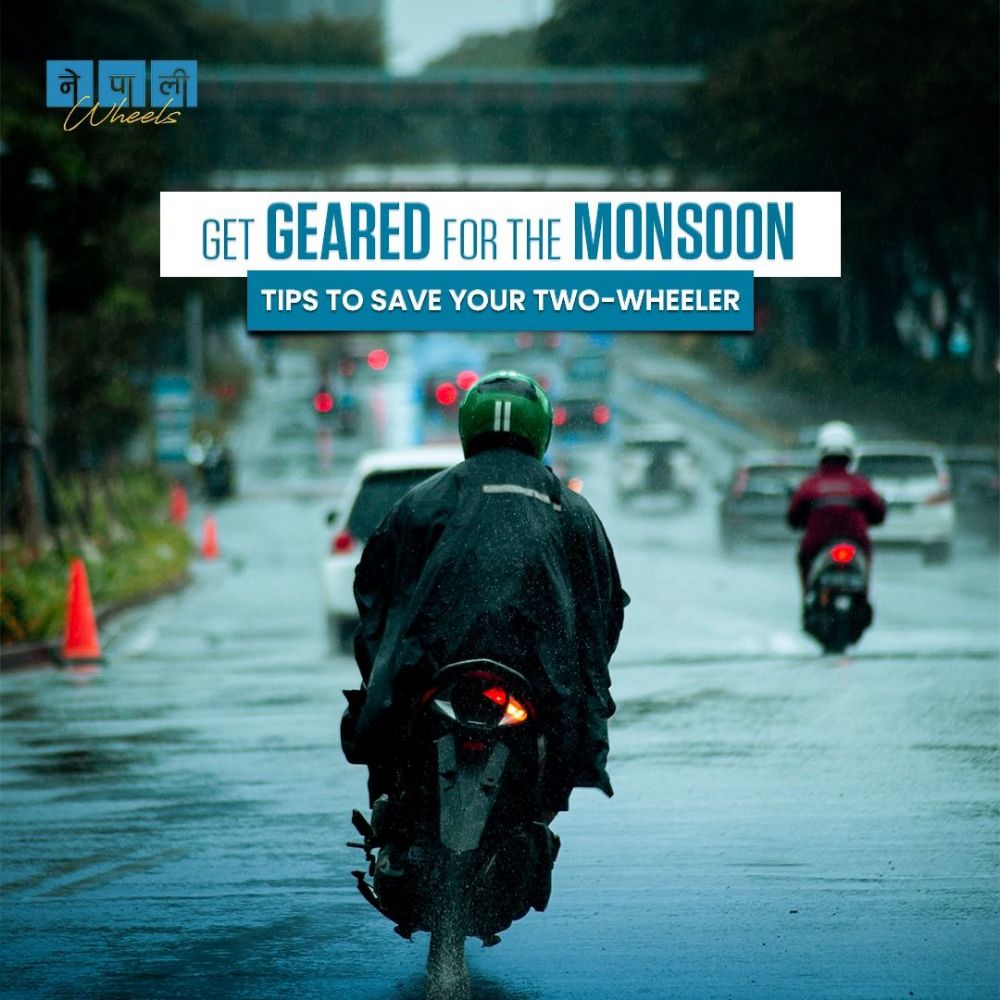 Nepal has entered the monsoon season affecting many daily activities of the people residing in the country. One of many activities that are tampered due to the rain is driving. Driving a vehicle, especially a two-wheeler in the heavy monsoon season is tricky for both the vehicle and the rider in many concerns. Not being able to protect oneself and the vehicle from this wet season might result in increased accidents and dangerous situations, especially with the roads paved with potholes. Below are some of the crucial tips that are to be followed to retain accidents and vehicle wear and tear this monsoon season:
Nepal has entered the monsoon season affecting many daily activities of the people residing in the country. One of many activities that are tampered due to the rain is driving. Driving a vehicle, especially a two-wheeler in the heavy monsoon season is tricky for both the vehicle and the rider in many concerns. Not being able to protect oneself and the vehicle from this wet season might result in increased accidents and dangerous situations, especially with the roads paved with potholes. Below are some of the crucial tips that are to be followed to retain accidents and vehicle wear and tear this monsoon season:
1. Rain cover
The very first way to prevent intensive damages would be by avoiding direct rain on the vehicle. Parking under covered spaces, using a rain cover while driving or parking under open spaces is essential to prevent the parts of the two-wheeler from direct exposure to rainwater that may eventually result in rusting, electrical fails and more.
2. Be gentle with the throttle
The monsoon is definitely not the ideal time to test the two-wheelers cruising and riding limits. The roads are pretty slippery and filled with hidden potholes, thus it is safer to be gentle on the throttle. Too much throttle and acceleration may result in the wheels spinning, losing traction and slipping.
3. Regularly servicing the brakes and tyres
Water can cause heavy damages to the brakes. Due to continuous exposure to rain water, the brake pads get slippery, rusty or jammed, causing the brakes to become less responsive. Braking too hard might cause the two-wheeler to skid on the wet roads. Cleaning the insides of the drum brakes ensures the discs’ alignment plus the correct amount of brake oil in the case of disc brakes are necessary. Similarly, the tyres should be able to maintain a good grip on the wet surfaces to avoid skidding. Thus, changing balding tyres and keeping the PSI level (tyre pressure) a little lower than the recommended level for dry conditions is crucial to prevent slips and accidents.
4. Oil chains, hinges and levers
Rain water will rust the chains, hinges and levers of the two-wheeler. This will result in restrictions on the proper movement of one's two-wheeler. To prevent this from happening, oiling these parts will not obstruct their continuous and free movement. One can also coat the battery terminals with grease to prevent moisture from getting at them. This will ultimately help keep the two-wheeler in a good working order.
5. Clean up air-filter
Moisture and dampness can cause the tearing up and blockage of the vehicle's air-filters. This can limit the clean air passing through the vents and engines. This will lead the two-wheeler to jolt or jerk on pulling the accelerator. Thus, it is important to regularly clean up the air-filter routinely to avoid any issues with acceleration and the engine.
6. Checking the lighting fixtures and being visible
Clarity and visibility is usually low during a heavy downpour. Thus, each time before riding on the road, it is important to check that the headlights work well. Also, covering the bike or scooter with some reflective stickers will make the two-wheeler visible to the other drivers on the road.
7. Wash and wax
Finally, routine washing is required to keep the vehicles healthy. This will prevent the build-up of dirt and mud from the mud puddles we drive through which is actually damaging our two-wheeler. Thus, regular washing is essential. In addition, waxing after each wash creates a temporary water-proof film on the vehicle, which will prevent rusting and keep the vehicle looking good and functioning well.

























